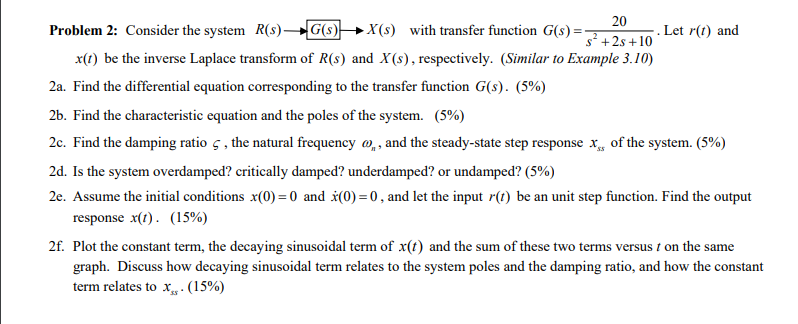Answered step by step
Verified Expert Solution
Question
1 Approved Answer
20 Problem 2: Consider the system R(s)G(s) X(s) with transfer function G(s) s +2s +10 x(1) be the inverse Laplace transform of R(s) and

20 Problem 2: Consider the system R(s)G(s) X(s) with transfer function G(s) s +2s +10 x(1) be the inverse Laplace transform of R(s) and X(s), respectively. (Similar to Example 3.10) 2a. Find the differential equation corresponding to the transfer function G(s). (5%) 2b. Find the characteristic equation and the poles of the system. (5%) 2c. Find the damping ratio , the natural frequency, and the steady-state step response x, of the system. (5%) 2d. Is the system overdamped? critically damped? underdamped? or undamped? (5%) 2e. Assume the initial conditions x(0) = 0 and x(0)=0, and let the input r(t) be an unit step function. Find the output response x(1). (15%) . Let r(t) and 2f. Plot the constant term, the decaying sinusoidal term of x(t) and the sum of these two terms versust on the same graph. Discuss how decaying sinusoidal term relates to the system poles and the damping ratio, and how the constant term relates to x,. (15%)
Step by Step Solution
There are 3 Steps involved in it
Step: 1

Get Instant Access to Expert-Tailored Solutions
See step-by-step solutions with expert insights and AI powered tools for academic success
Step: 2

Step: 3

Ace Your Homework with AI
Get the answers you need in no time with our AI-driven, step-by-step assistance
Get Started


